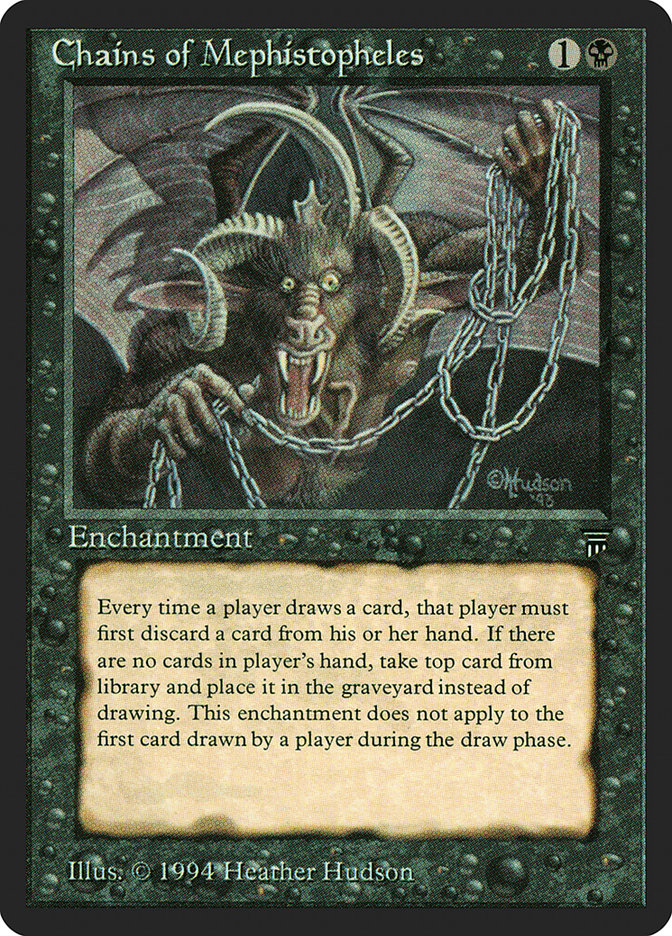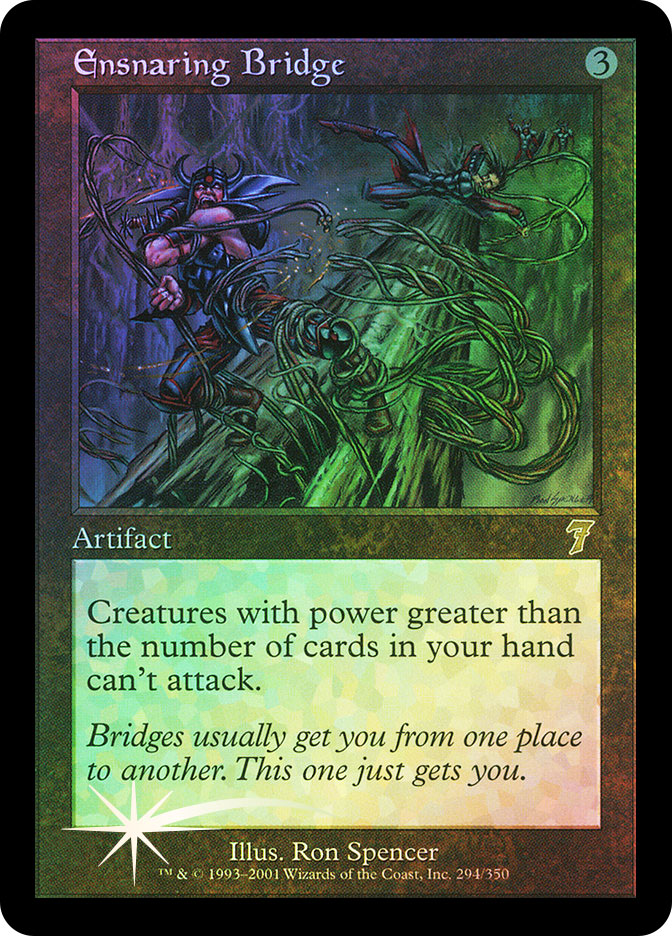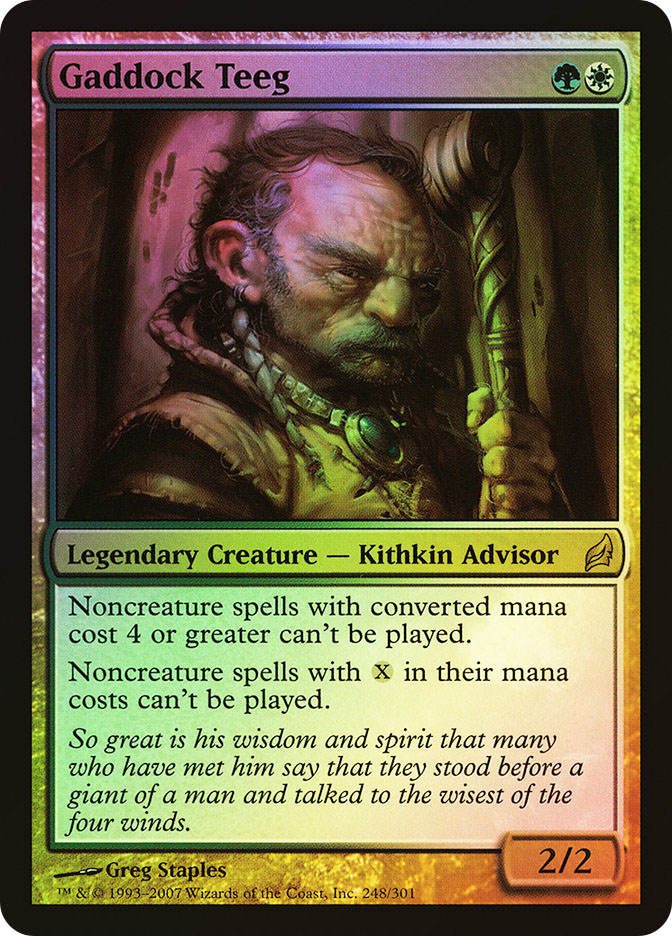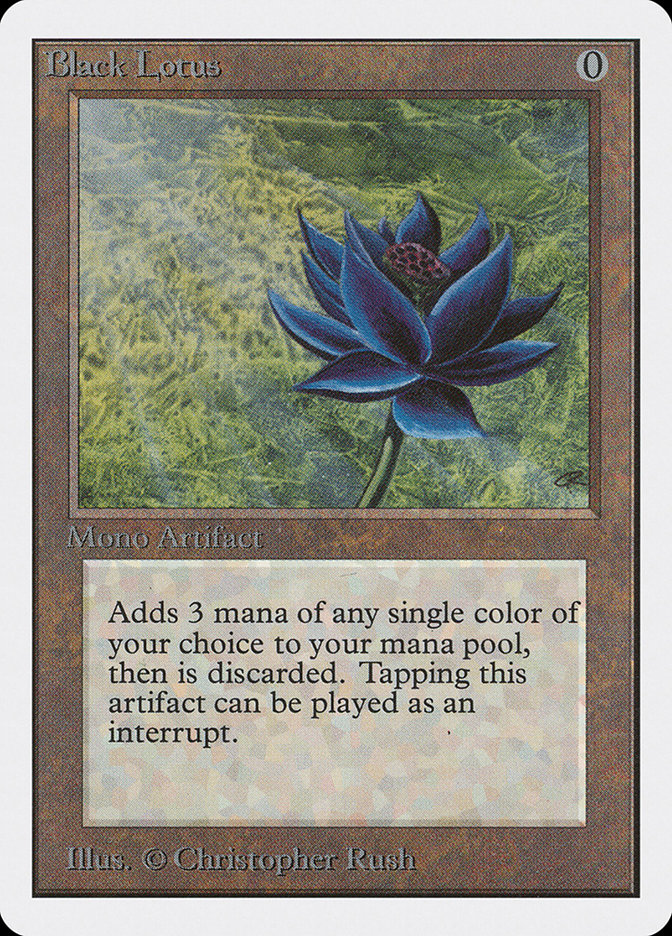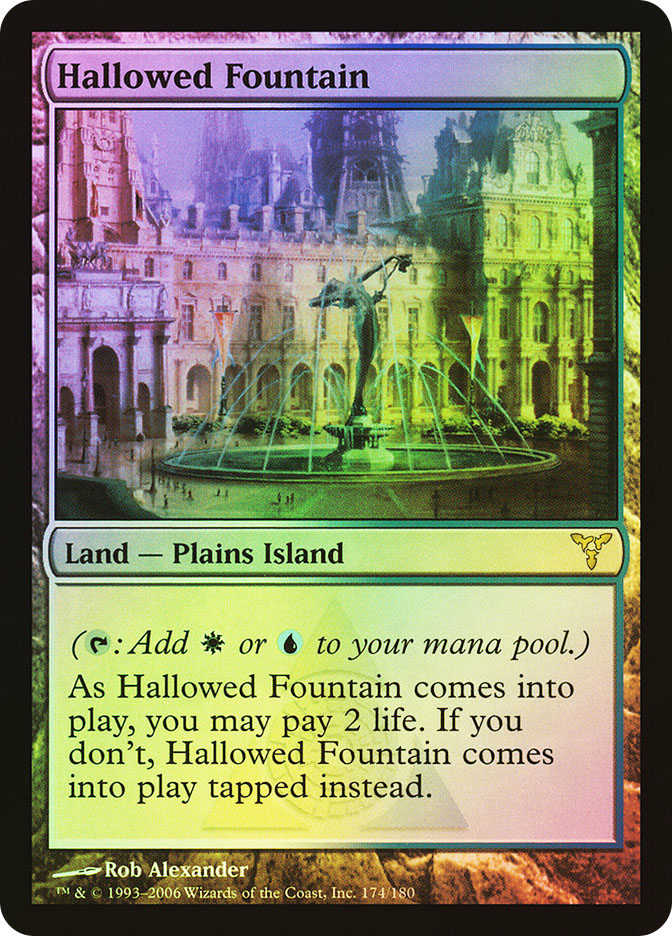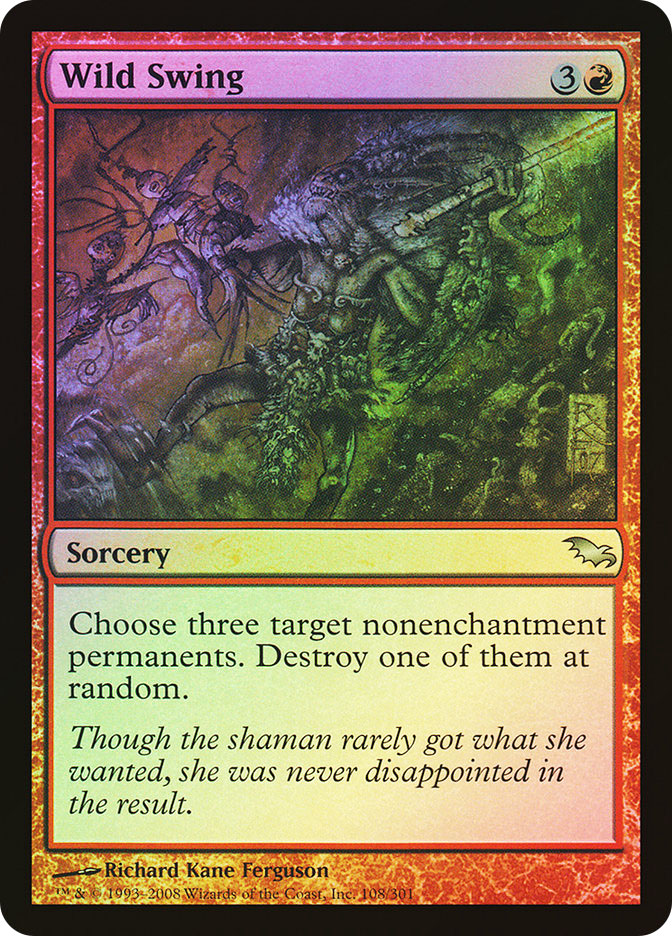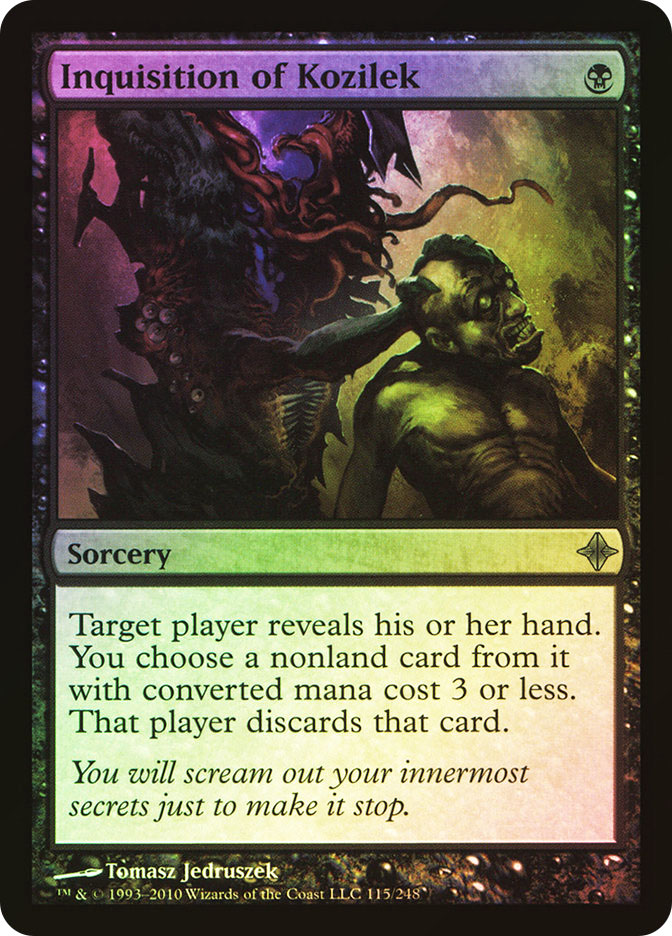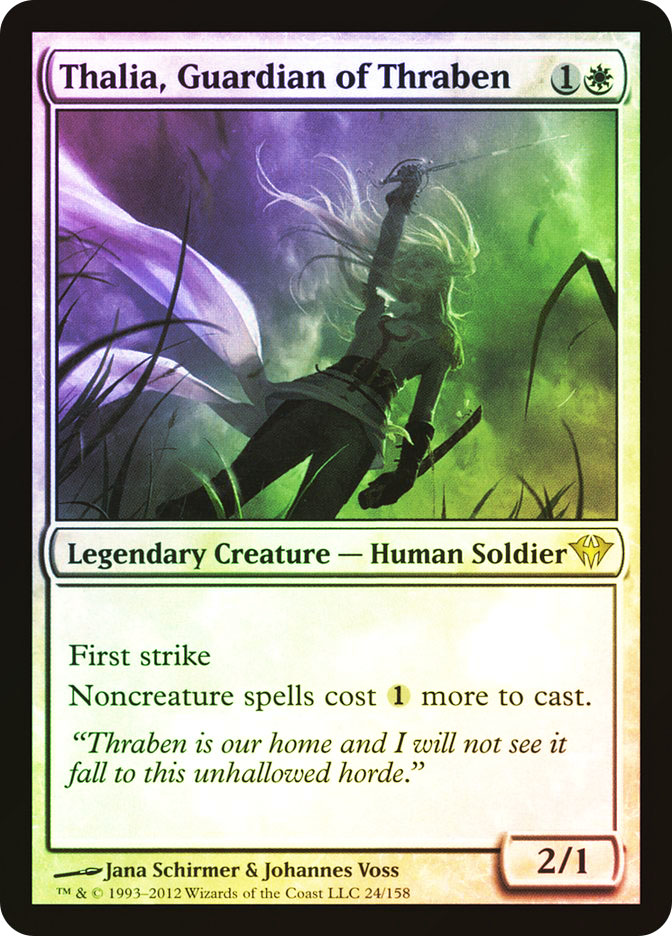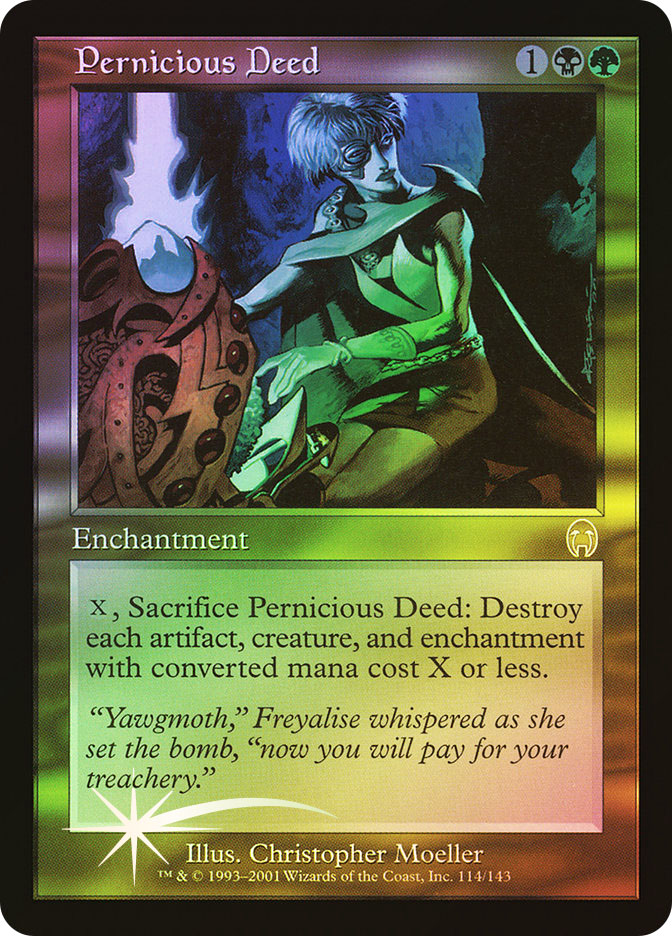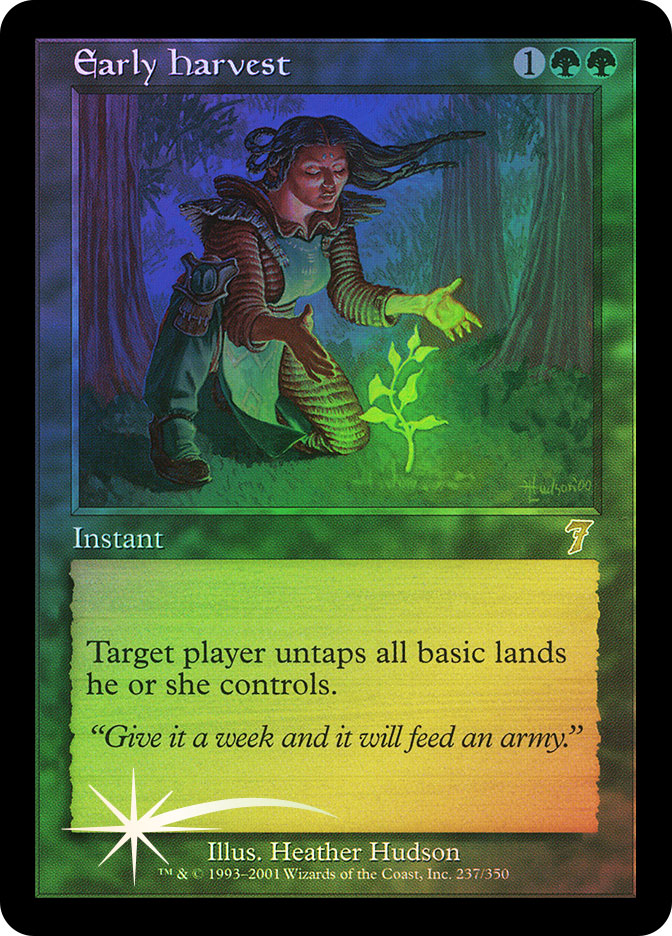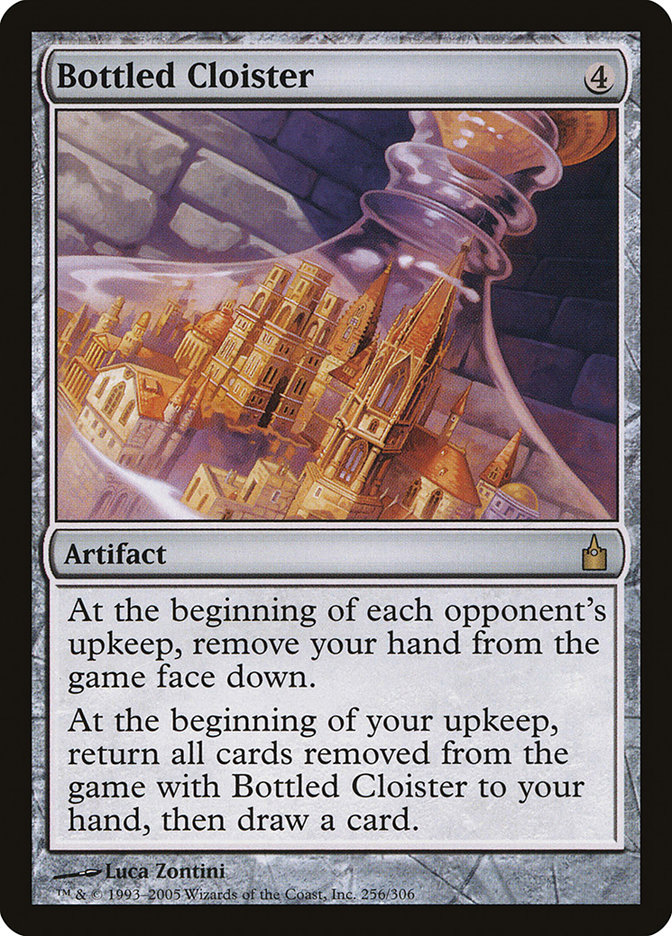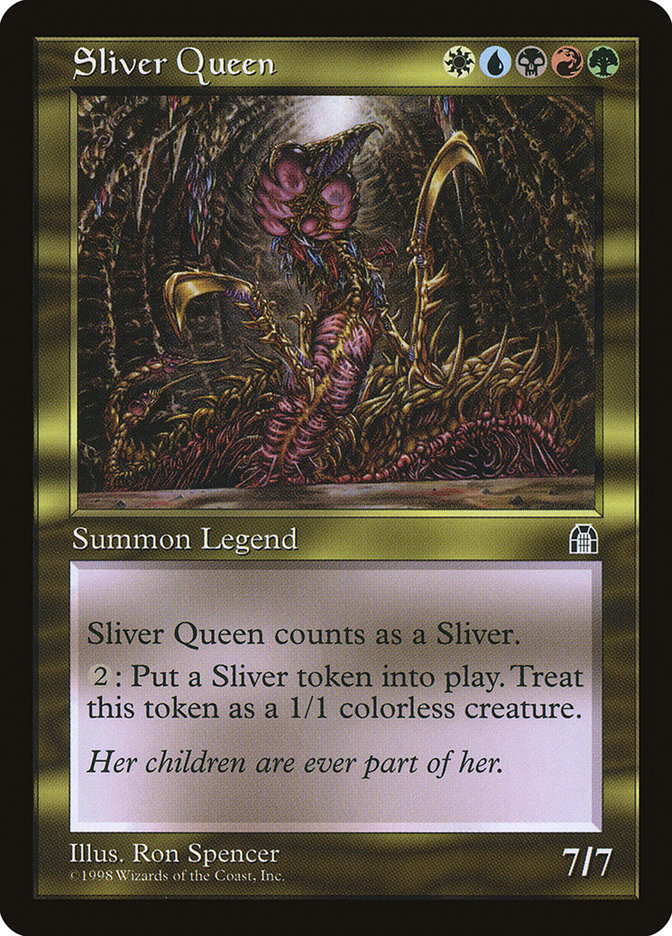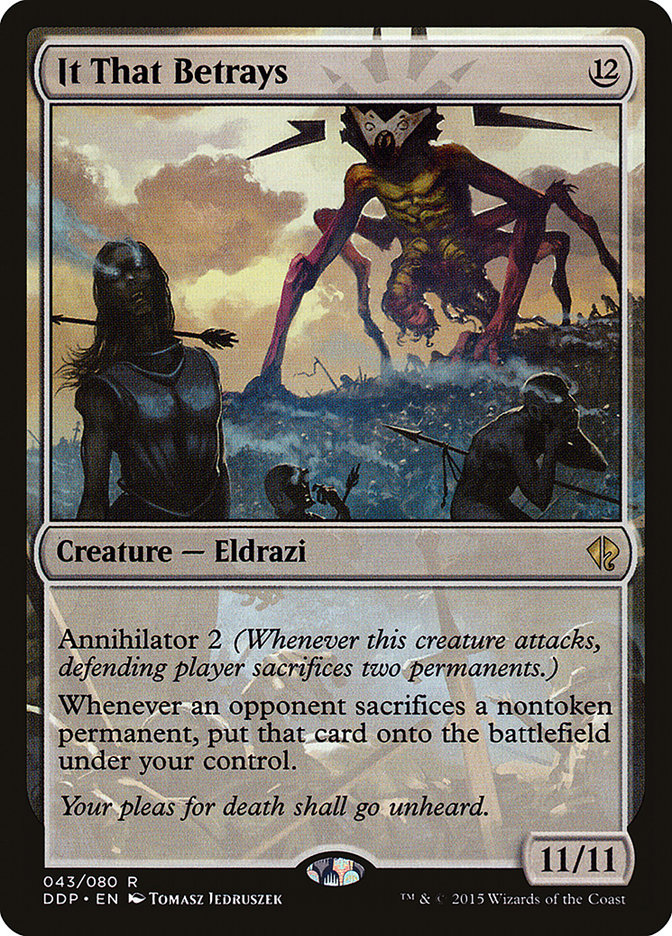It’s no secret that Reserved List cards have been the best long-term investment in Magic for years. While some of them have fallen from their ludicrous, cryptocurrency-inflated 2018 highs, nobody has ever been sad about owning Underground Sea, Gaea’s Cradle, or even Replenish unless they bought in at the absolute top of the market. The amount of value I’ve gained simply by having purchased a complete set of Legends back in 2009 and holding onto it for a decade almost certainly exceeds the vast majority of my speculations during that period.
Unfortunately, buying into the Reserved List is quite hard at this point. Not only are these cards incredibly expensive, but almost all the potential gainers have been analyzed and overanalyzed by speculators and writers like me over and over again. It’s possible, perhaps even likely, that certain Reserved List staples will spike several more times over the next couple of years. But Chains of Mephistopheles is already a thousand-dollar card. Are you really going to buy in now and hope it hits $1,500?
This is why I did a double-take when I saw one of my Twitter friends referring to a subset of newer cards as “the Modern Reserved List.” After all, if there is something out there that can conceivably be called “the Modern Reserved List” without eliciting gales of laughter, isn’t it worth spending a lot of time to see if there’s any truth to that claim?
Let’s pump the brakes a little, though. Before we can really get into whether it’s okay to call anything “the Modern Reserved List,” we’ll need to take a look at what makes Reserved List cards valuable in the first place. As I see it, it’s a confluence of four things:
Incredibly low supply. There just weren’t that many copies of Eureka, Mox Jet, or Chaos Orb originally printed, at least by current standards. Fewer exist today. Many have been lost to time, and others are locked away in established collections, never to be sold. If you want one of these unique beauties, you’re going to have to pay up.
Incredibly high power level. Granted, this isn’t something that all Reserved List cards share. There are plenty of Reserved List cards that could be printed today—in fact, they’d be bulk rares if they were. But the truly desirable Reserved List cards are from an era of Magic design where things were quite different than they are now, and many of them are powerful in odd and unique ways.
The no-reprint promise. This is the big one. For as annoying as the Reserved List is, it’s Wizards of the Coast’s promise not to reprint any of these cards, ever, that makes them such lucrative long-term holds. Nobody would ever be willing to drop a thousand dollars on a card that WotC could turn around and put in a set tomorrow.
The “Wow!” factor. There is something incredibly cool about owning a piece of Magic history. These are cards that make your opponent say “wow!” during a game, which is a large part of why lots of folks are willing to spend big bucks on them.
All of this begs the question: is it even possible for a Modern-legal card to fit these criteria?
The Allure of the Original Set Foil
Original set foils are the closest thing we have to a Modern Reserved List.
Before I explain why, let’s be clear about what I mean when I say “original set foil.” To me, an original set foil is the first foil printing of a given card, regardless of any future promos. For example, Ensnaring Bridge has been printed five times: first in Stronghold, then in Seventh Edition, then in Eighth Edition, then as a Masterpiece, and then in Masters 25. There were no foils in Stronghold, so the original set foil for Ensnaring Bridge is the Seventh Edition copy.
Things get a little confusing when a promo copy is the earliest released foil of a given card. For example, Reanimate came out in Tempest, a set with no foils, so the earliest available foil copy of the card is the FNM promo from 2004. It would be another fifteen years before Reanimate was printed in another proper expansion, Ultimate Masters. In these cases, I’ll be referring to the original promo foil (the FNM promo in this instance) as the original set foil, despite the fact that it wasn’t actually released as part of a formal set.
But I digress. Do original set foils fit the criteria that I laid out above for why Reserved List cards are valuable? Let’s discuss:
Incredibly low supply? This is card-dependent, of course—there are plenty of foils kicking around for staples from the most recent sets. But the further back we go, the more this holds true. For example, there are enough copies of Gaddock Teeg around now thanks to Ultimate Masters that the price of that card has dropped from $50 to $7. But we know that there aren’t too many Lorwyn copies of this card kicking around—that’s why the price was $50 in the first place. And the number of Lorwyn foils that are out there, especially in good condition? Very low.
Incredibly high power level? Again, we have to go a little more case-by-case here. Unlike with Reserved List cards, where even bad ones can be worth quite a bit of money simply by being rare, I would not recommend buying original set foils that don’t already have a lot of demand associated with them. You’re not going to get rich by speculating on a stack of Ember Swallowers.
But yes, many cards that were printed in the Modern era have an incredibly high power level. We’re talking about cards like Jace, the Mind Sculptor and Mox Opal, not just Standard hits like Hydroid Krasis and Kaya’s Wrath.
The no-reprint promise? This is the key to understanding the appeal of original set foils. Obviously the idea of no reprints doesn’t really translate to Modern cards, but there’s one thing that WotC can’t make any more of: cards from a set’s first edition.
The idea of first edition cards being more valuable hasn’t been much of a thing in Magic recently—at least, not as much as in other TCGs and in the world of sports card collecting. The whole point of Unlimited having a white border was to visually separate it from the older, black-bordered “first edition” set, which was designed to indicate greater collectability.
Heck, that’s what the name Unlimited was originally supposed to mean—the black-bordered set would have a limited print run, while the white-bordered set would have an unlimited print run. That way, collectors could pay extra for the nicer-looking (and rarer) black-bordered cards while latecomers and people who were just interested in the gameplay could snag the white-bordered versions for a lot less money. But then WotC decided to “revise” Unlimited, and the rest is history.
The “first edition is best edition” way of thinking requires a certain amount of emotional buy-in, but it’s not hard to imagine this mindset becoming more pervasive as Magic heads toward its third decade of life. We’ve already seen it happen to some degree with old-bordered foils as opposed to Modern-bordered foils—a foil copy of Birds of Paradise from Conspiracy books for $15, while the Seventh Edition version will set you back $800. But this is still true with some newer cards that were never printed in the old frame as well. Take Hallowed Fountain—the Ravnica Allegiance foil is $30, but the Dissension foil is $300. Part of this is due to art and other concerns, but a large portion of the value comes from the fact that owning a first-edition foil of a valuable card is just very cool.
Why are we talking about original set foils and not just the coolest available promo? Well, promotional foils are worth a column in their own right, and they have a lot in common with original set foils, but there’s one big difference. WotC can always print another round of promos, and those newer promos might be nicer than the older ones. They can always print a new batch of borderless cards with all-new art, but they can’t (or, more accurately, won’t) just print Lorwyn again. That means that your foils from Lorwyn are only getting scarcer and scarcer over time—just like Reserved List cards.
The “Wow!” factor. As with our discussion on high power level, this is a case-by-case sort of thing as well. Luckily, it’s all connected. For example, more powerful cards always have a fairly high wow factor because powerful cards tend to be expensive, and owning foil copies of expensive cards is more impressive than owning foil copies of cheaper cards. To the same end, older cards with a higher degree of scarcity have a greater wow factor than newer and more common cards.
Art and border play heavily into wow factor as well. Old-bordered foils are especially impressive, since that particular look instantly connotes age and scarcity. Ditto for pieces of art that only exist on the first printing of a particular card. The Dissension version of Hallowed Fountain is the only version with that specific piece of art, for example, and that is part of why it’s worth so much. If WotC had used that piece of art for Return to Ravnica and Ravnica Allegiance as well, the original set foil wouldn’t command nearly as large a premium.
The Value of Locking In Value
While we often place a great deal of importance on a card’s ability to gain a lot of value very quickly, knowing which cards are likely to have long-term stability is just as key. If you’re a heavy volume trader or someone who buylists a lot of stuff for store credit bonuses, you’re often going to be staring at either a couple of flashy binder pages or an online inventory page, wondering how to lock in your profits.
Even though there aren’t any more Masters sets on the immediate horizon, WotC has made it clear that they will continue to reprint expensive cards at every possible opportunity. And as important as reprints are in maintaining the overall health of non-rotating Magic, they’re also the bane of anyone looking to invest in cards over the long haul. I’m glad that WotC reprinted Gaddock Teeg, but it sure is rough that my $50 card is now worth less than $10.
This is a big part of why people like investing in Reserved List cards to begin with. It’s a little like putting money into a CD or other long-term investment account—you won’t have access to that cash for a while, but you’re more or less protected from the market’s wilder swings.
Original set foils behave a lot like Reserved List cards in this way. For example, foil Lorwyn copies of Gaddock Teeg didn’t lose 85% of their value after the card was reprinted like the non-foil did. Instead, it only dropped 10-15%. And some original set foils don’t drop in price at all, ever—foil copies of the original shocklands have only increased in price despite being reprinted twice.
Because of this, trading into original set foils and then socking them away is a solid way to increase the overall value of your collection while lowering the amount of risk in your profile. Did you end up with a massive stack of planeswalker-matters specs that paid off for you? Trading them into a couple of high-profile original set foils might be a good way to move out of a risky hold and into a safer one.
What to Look For in an Original Set Foil
Based on what we’ve discussed so far, what sort of original set foils are most desirable?
Well, let’s start with cards that are already obvious Modern staples, the powerful spells that will elicit a “whoa” from across the table and are likely to be useful in the format for years to come, regardless of shifts in the metagame. Rares or mythics are best, because there are more foil copies of commons and uncommons floating around. Older cards are better than newer ones, because they’re already quite a bit scarcer. Lastly, we want cards where the earliest version has unique art if possible.
Many of the cards I want to discuss in greater depth already have wild original set foil premiums. Others do not—at least not yet. To me, it makes sense to discuss a whole suite of different cards so that we can look for patterns as well as specific spec targets.
Let’s begin with a card that already has a pretty outrageous original set foil multiplier:
Thoughtseize is basically the poster child for the theory that I’m presenting today. The only hang-up is that the Iconic Masters reprint used the Lorwyn art, where beforehand you needed a Lorwyn copy of the card to get that particular image in foil.
Regardless, the original set foil is already at a pretty high premium—$450 retail as opposed to $75 for Iconic Masters or $40 for Theros. It might go a little higher at some point, but this card is already close to the ceiling I’ll be looking for with some of my other picks.
By contrast, Snapcaster Mage doesn’t really have an original set foil premium despite the fact that you need an Innistrad copy to get that sweet Invitational art. Both the Innistrad and Modern Masters 2017 copies are at $150 right now, with the Ultimate Masters foil at $120, the RPTQ foil at $150, and the Ultimate Box Topper at $250. There are quite a few foil copies of this card, but the Innistrad foil is the one that I’d pick to gain the most value going forward.
The original set foil premium is already active here, with Rise of the Eldrazi foils selling for $70 while Conspiracy: Take the Crown and Modern Masters 2017 copies are floating between $18 and $20. And this is true even though Inquisition of Kozilek was an uncommon in Rise of the Eldrazi!
Mox Opal doesn’t pass our art test—the Modern Masters 2015 version has the same art as the Scars of Mirrodin copy—but the original set version is still worth more: $225 against $150. I expect that disparity to increase over time, regardless of when this card is reprinted.
Here’s another card where I don’t think the original set premium is high enough. Yes, the Mirrodin version foil Chalice ($200) is quite a bit higher than either the Modern Masters 2013 or Masters 25 versions ($100), but these figures don’t fully reflect just how scare foils from Mirrodin actually are these days. And with non-foil Chalices out of stock at $70, these foils are all underpriced anyway. This one is going to hit $300 at some point, and $400 isn’t out of the question.
A foil version of Blood Moon with the art from The Dark would be amazing, but alas, such a thing does not exist yet. Instead, the $130 Eighth Edition foil is the earliest we have, featuring the same art we’ve seen on Blood Moon for the past fifteen years. That art is repeated on the Ninth Edition copy, also $130, as well as Modern Masters 2013, Modern Masters 2017, and Masters 25. Those foils are just $40 each, which gives the early copies of Blood Moon a pretty decent multiplier. I still think it could be higher, though—Eighth Edition foils are incredibly scarce, and I don’t think we’re getting another reprint of this card any time soon. It’ll hit $200 eventually.
Thalia is an example of a card that doesn’t have a large original set foil premium associated with it yet. The Dark Ascension foil sells for $30, while the Masters 25 foil is sold out at $25. This makes sense: other than a few small cosmetic differences (expansion symbol and watermark, mostly), these two foils are identical.
Why bring up Thalia at all, then? It’s not because I think that the Dark Ascension foil is suddenly going to skyrocket, but because I want to point out that even unexciting original set foils like this command a bit of a premium and have a greater degree of long-term stability. If WotC reprints Thalia several more times, the Dark Ascension foil will be the least affected because no other copy can ever be the first original set foil. If you’re in the market for a foil playset of a card like this, I’d always opt for the original set foil—even at a slight premium—for this reason.
What? Pernicious Deed isn’t even in Modern yet! Why are we talking about it here?
First off, I’m pretty sure that Pernicious Deed will either be in Modern Horizons or some future Horizons set. It fits the pattern too perfectly to be left out of the format for long. More importantly, though, I want to talk about cards with very old original set foils. Pernicious Deed’s original set foil was all the way back in Apocalypse, which might as well have been in medieval times in terms of supply and availability.
To be fair, the Apocalypse foil already has a pretty high premium. It retails for $70, compared to $7 for the Masters 25 foil. That’s a 10x multiplier for the original set foil, which is a pretty elite figure. You can’t ask for much more than that, right?
Honestly? Yes, I can. These early set foils are astonishingly scarce, especially in good condition. Back when I was trying to put together my foil Cube in 2009 and 2010, it was easy enough to find things like Revised dual lands and Gaea’s Cradle as long as I was willing to pay the price. But foils like Pernicious Deed or even, say, Crucible of Worlds from Fifth Dawn? Good luck. Nobody had them—or if they did, they were in miserable shape. And it’s not like they’ve gotten easier to find over the past decade, as more and more copies disappeared into permanent collections.
Or take a card like Genesis from Judgment. A decade ago, Cube builders widely considered this to be a top-ten most annoying foil to track down. This was before they released the Judge foil and long before the card was in Battlebond—heck, it was before there were enough good green Cube cards to render Genesis more or less irrelevant in any format.
Foil copies of Genesis from Judgment are just $15 now, which reflects the fact that very few people run the card in anything and those that do are willing to settle for the cheaper copy of the foil. What that does not reflect is just how scarce this card actually is. It is far, far scarcer than countless Reserved List cards that are worth a lot more and aren’t nearly as good.
Admittedly, this shows the weakness in the idea of treating original set foils as if they were akin to the Reserved List. If everybody thought this way, even marginal older set foils like Genesis would be worth $40-$50, much like how there are plenty of expensive Reserved List cards that are close to unplayable.
On the other hand, this also shows the potential for growth in this category. The scarcity is there; what’s missing is demand. And if that changes, for any reason, we’re going to see some of these cards increasing in price by five- or sixfold.
Some of that demand might come on a case-by-case basis, like for cards like Pernicious Deed. If Deed is added to the Modern card pool and people start playing it, it’ll be really obvious really quickly that there are almost no Apocalypse foils out there. That $70 figure could become $250 in the blink of an eye.
But I’m more interested in an overall increase to the price of original set foils, especially old-border foils. This is already starting to happen—according to MTG Goldfish, a foil set of Seventh Edition, which is notoriously scarce, has roughly doubled in price over the past calendar year. That’s significant growth, and that growth still appears to be increasing.
Ultimately, this is where I feel like original set foils have the most in common with the Reserved List. The subsection of the Magic community that loves to collect things decided that Reserved List cards are desirable because of how old, cool, and scarce they are, and it looks like original set foils might be the next big subsection of cards to get that treatment. If these cards start to spike in earnest, there will be a heck of lot of money to be made. I, for one, will try to get in as early as possible.
This Week’s Trends
Despite the first-ever Mythic Invitational being held at PAX East last weekend, Standard prices didn’t really budge this week. A few Standard-legal Commander cards ticked up a little, like Zacama, Primal Calamity and Smothering Tithe, but that’s about it. Standard prices are in a holding pattern until we know more about War of the Spark, which should begin…well, actually, they began yesterday. While I didn’t have a chance to write them up for this article (which was finished before those previews were revealed on stream), I’ll be covering these cards in detail as soon as I can. If you have any specific questions in the meantime, feel free to leave them for me in the comments.
As for the Mythic Invitational itself, I would call the event a modest success. WotC had to be happy with the overall Twitch viewership, which was far higher than for…well, pretty much any other Magic-related thing ever. On the flip side, the Dual Standard format was clunky at times, and I’m still not convinced that WotC has figured out the best way to hold and present events like this yet. Regardless, some growing pains are to be expected, and I have to believe that things will improve even more for the next go-round. Now we just have to wait and see if the increase in Magic’s Twitch viewership translates into an increase in size of the tabletop player-base. Here’s hoping!
Meanwhile, Modern continues to go through its spring boom. Jace, the Mind Sculptor was the biggest gainer of the week yet again, and finding these for under $150 is almost impossible now. Dark Confidant, Scalding Tarn, Kalitas, Traitor of Ghet, and Chalice of the Void were the other Modern staples that gained at least $5 this week as the Modern Horizons hype continues to grow.
Also up this week thanks to Modern: Bottled Cloister, a former bulk rare from Ravnica: City of Guilds. I’ve always been a big fan of this one, and it’s nice to see it starting to see play as a one-of in Grixis Whir and Whir Prison. One-ofs rarely end up being worth too much, but this is a low-supply card from an old set that is currently seeing play in a top-tier Modern deck. I wouldn’t be surprised if it’s fairly stable in the $5-$10 range going forward.
Prices are also still skyrocketing over in the land of Commander. Sliver Queen was probably the biggest Commander gainer of the week, on still more rumors that Slivers will be coming back to Magic soon. Sliver Queen is a pretty safe buy because it’s a Reserved List card that every Sliver Commander player needs, but it’s also over $100 at this point. $150 isn’t out of the question, especially if Slivers are confirmed at some point, but the ship has probably already sailed on making any reasonable profits here.
One of the biggest trends in casual speculation, interestingly enough, is colorless cards. It started a few weeks back with Kozilek, the Great Distortion, but the trend has kept up. Emrakul, the Promised End; Darksteel Forge; Paradox Engine…the list goes on. This week, It That Betrays and Blightsteel Colossus each gained at least $5-$6 as people continue to gobble up the most interesting colorless Commander staples.
Does EDHREC have any advice for us here? Well, the top colorless Commander staples that are also mythic rares are Mana Crypt, Mana Vault, Sword of Feast and Famine, Wurmcoil Engine, and Crucible of Worlds. None of these cards has experienced huge spikes recently, but Wurmcoil Engine looks like it might be on the cusp of a major rally and Crucible of Worlds has started to tick up again for the first time since its reprint in Core Set 2019. Both cards seem like solid buys to me right now, and you should snag the others if you’re in the market and have been holding out.


